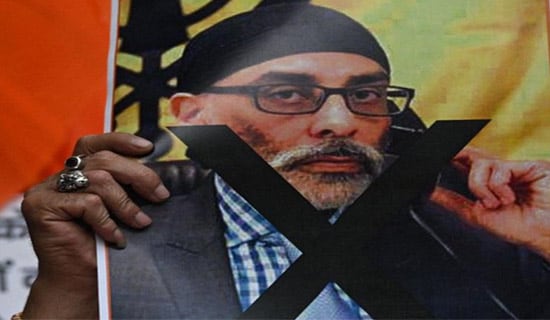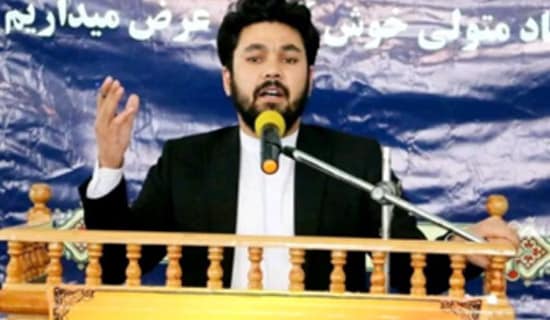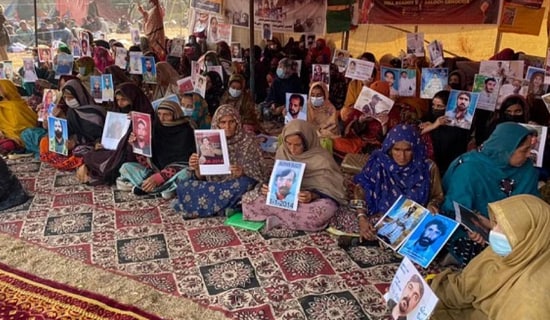Introduction
In the past three weeks, there have been numerous media reports in the non-Arabic media stating that Russia, the Syria regime's main ally alongside Iran, has decided to step up its military involvement in Syria and participate in fighting alongside the forces of the regime of Syrian President Bashar Al-Assad; some of the reports also claim that this plan is already being implemented on the ground. Arab media outlets, both pro- and anti-Assad, have also reported on Russian military involvement in Syria. These reports focus on several main topics: the establishment of a new Russian military base near Jableh on the Syrian coast; the reinforcement of Russian troops, including with combat pilots, and the participation of Russian pilots in airstrikes on oppositionist and Islamic State (ISIS) targets in Syria; and the transfer of advanced weaponry, including fighter jets. On September 12 it was even reported that Russia had announced its intention to carry out military maneuvers off the Syrian coast on September 14-17, which are to include the launching of missiles.[1]
In fact, back in March 2015, Assad had called on Russia to increase its military presence in his country. He told Russian media: "A Russian presence in various locations around the world, including the Middle East and the Port of Tartus, is vital in creating a balance that the world lost after the fall of the Soviet Union. As far as we are concerned, the more this presence in our area increases, the better it is for the stability of this region, since the Russian role is crucial to global stability. We welcome any expansion of the Russian presence in the Middle East, particularly on the Syrian coast and in its ports, but obviously this is conditional upon a plan by the Russian political and military leadership to place forces in various areas..."[2]
Military ties between Russia and Syria are not new; they began during the time of the Soviet Union and continued after its collapse. During the current Syria war, which has been raging since 2011, both sides have acknowledged their military ties and stated that Russia was arming the Syrian regime based on agreements signed prior to the outbreak of the war.
The most prominent example of the Russian military presence in Syria is the Russian military base in the coastal city of Tartus, which serves Russian navy ships operating in the Mediterranean Sea. Another less obvious example is the presence of Russian military experts at various military bases across Syria. Evidence of this was uncovered at the Tel Al-Hara base in Quneitra in southern Syria, which fell to opposition forces in October 2014. Documents found there indicate that it was a joint Russian-Syrian intelligence facility.[3] There have also been reports of Russians fighting alongside Assad's forces in the war,[4] but Russian authorities have said that they were mercenaries recruited by a Russian firm, whose license was subsequently revoked.
In response to the recent reports that Russia has increased its military involvement in Syria, Russian President Vladimir Putin said that his country gives the Syrian regime "widespread support with equipment, military training, and weaponry. We are weighing several options, but this topic [military involvement] is not on the table yet."[5] The Russian Foreign Ministry responded similarly: Several days after U.S. Secretary of State John Kerry told his Russian counterpart Sergey Lavrov in a phone conversation that he was concerned by reports that Russia had increased its military presence in Syria, a Russian foreign ministry spokeswoman said that Lavrov had said to Kerry that "Russia has never hid the fact that it transfers military equipment to the Syrian regime so it can combat terrorism" and "Russia will continue to provide this assistance to the regime."[6]
The Syrian regime's response to reports of intensified Russian military involvement in Syria has not been uniform. In an interview with Hizbullah's Al-Manar TV, Syrian Information Minister Omran Al-Zou'bi denied the reports and claimed that there were no Russian forces and no Russian ground, naval, or aerial military activity in Syrian territory.[7] In contrast, Deputy Foreign Minister Faysal Al-Maqdad confirmed that there was a Russian military presence, but that it comprised advisors only.[8]
On the other hand it seems that Syrian and Lebanese media close to the Syrian regime have been quick to report on and confirm these claims, adding more details. Thus, for instance, an article in the Lebanese daily Al-Akhbar, which is close to the Syrian regime, stated that "the Red Army is fighting in Syria" and that thousands of elite Russian troops are deployed in the country.
The reason for this media effort appears to the Assad regime's desire to send a message, to both supporters and opponents, that it is still receiving support from Russia. This follows several recent reports that Russia has grown close to Saudi Arabia, which leads the opposition to the Syrian regime, and that Russia's attitude towards the regime and towards Assad himself has shifted. It should also be mentioned that this trend of positive reports in the pro-Assad media about Russian reinforcements contradicts the line that was until recently taken by the regime and its allied media - which involved denial and downplaying of Iranian and Hizbullah participation in the fighting in Syria.
In contrast to the tendency in the pro-Assad media, at the start the Syrian opposition media and anti-Assad Arab media was discernibly laconic about reporting on Russian involvement - in stark contrast to their broad coverage of Iranian and Hizbullah involvement with the Syrian regime. This could stem from the desire of the Syrian opposition and its supporters to avoid angering Russia, which they still see as a key factor in solving the Syrian crisis, especially in light of reports that it has become more flexible vis-à-vis the current Syrian regime, and also in light of the hesitancy of the current American administration.
The first official response by the Syrian opposition to the Russian military intervention in Syria appeared only on September 10, 2015, about three weeks after reports of stepped-up Russian military involvement in Syria began to emerge. Mustafa Farhat, spokesman for the Free Syrian Army (FSA) chief-of-staff, warned that the Russian intervention in Syria was "dangerous" and threatened that "the FSA and the Syrian insurgents would transform Syria into a graveyard for the Russians." Farhat also called upon Turkey, the Gulf states, and the international community to stop Russia.[9] Opposition sources told the London-based Saudi daily Al-Sharq Al-Awsat that Russia's objective was "to establish a canton (statelet) on the Syrian coast that would be loyal to it and would extend from the port of Tartus to Latakiya, and encompass the towns of Baniyas and Jableh, similar to the Donbas region in Ukraine [controlled by pro-Russian separatists]."[10]
This paper will review the Syrian regime's media efforts to play up, and confirm, claims of increased Russian military involvement in Syria:
Regime-Affiliated Daily Publishes Article By Thierry Meyssan: "The Russian Army Is Involved In Syria"
On August 26, 2015, the Syrian daily Al-Watan, which is close to the regime, published an article by French journalist and activist Thierry Meyssan, a supporter of the Syrian regime and the founder of the conspirationist French website Reseau Voltaire, whose articles are often featured in the daily. This article, titled "The Russian Army Is Involved In Syria", exposed the establishment of a joint Russian-Syrian military committee and the military and intelligence that Russia is providing to the regime. It stated: "Although at the beginning of the conflict Russia refrained from taking part in the military operations, this did not prevent it from recently establishing a joint Russian-Syrian military committee. Within a few weeks, many advisors arrived in Damascus, and proposed the establishment of an additional Russian military base in Jableh. Recently, Damascus received six MiG-31 jets - considered the best in the world[11]... At the same time, Moscow began equipping Damascus, for the first time, with satellite photos. This decision, which took [Russia] five years to make, will completely change the situation on the ground..."[12]
Article In Regime-Affiliated Lebanese Daily Al-Akhbar: "The Red Army Is Fighting In Syria"
Nahed Hattar, columnist for the Lebanese daily Al-Akhbar, which is close to the Assad regime, confirmed, in a column titled "The Red Army Is Fighting In Syria," reports that another Russian military base had been established in Jableh, and also reported that Russian forces were deployed in several areas across Syria, including Homs, Hama, Dar'a in the south, and 'Ain Al-Sawda, on the Turkey-Syria border. According to Hattar, these [measures] comprise a strategic action that will expand until a comprehensive Syrian-Russian strategic alliance is established, with the aim of changing the balance of power in the Middle East. He added that following the dismantling of Syria's chemical weapons "Syria was placed under the Russian nuclear umbrella," and noted: "The Russian military battle presence in the Syrian war has become a fact, and it may expand and develop, and have more impact on the ground... in the last third of the month of August 2015, officers and fighters from the Red Army landed at the first Russian military combat base in Syria... which is located at Hamimim in Jableh next to Latakiya... [where] infrastructure of an airport was set up, and which includes a military camp for pilots and select units - which could by now number 1,000 troops, but which certainly will increase to 3,000. Naturally, the number of Russian troops deployed in a number of areas, including Homs, Hama, Latakiya, Dar'a, and 'Ain Al-Sawda,is not known. According to diplomatic reports, a Russian rapid intervention force is deployed at a base near Damascus..
"When discussing with Syrian officials the reports in the media and in the field that Russia is beginning to join the fighting in Syria, [their] first answer is 'defense contacts between the countries are long-term, permanent, and developing, and what is happening now is within the framework of cooperation and surprises none but those whose imagination causes them to think that Moscow will not go all the way with us.' That is, [these officials are saying that] the reports on the increase in Russian military activity in Syria are 'correct' but 'in general, not in terms of the specifics'..."
Hattar added that the Syrian army's air power has recently increased, and that Russia is providing Syria with satellite photos of the battlefronts. He wrote that "the Red Army has begun to fight alongside the Syrian people in the defensive war against terrorism" and stressed that this is not a development of the past weeks, but a move that began this spring, when Assad told the Russian media that he supports establishing a new Russian military base on Syria's coast. According to Hattar, this does not come in response to fears of the development of an ISIS pocket in Damascus, but is a carefully examined strategic move. He added: "This move will expand until the establishment of a comprehensive Russia-Syria strategic alliance aimed at changing the balance of power in the Middle East from the roots..."
Also according to Hattar, the turning point in the Russia-Syria military relationship was the understanding that Syria's chemical weapons had to be dismantled in order to prevent an American attack: "At that moment, Syria was placed under the Russian nuclear umbrella..." He added that Moscow had coordinated the current military expansion in Syria with Iran.[13]
Syrian Army Facebook Page: Russian Pilots Participated In Bombing Rebel-Held Idlib
SUPPORT OUR WORK

The Syrian Army Facebook page reposted an item originally posted on the pro-Assad "Heroic Deeds Of The Syrian Army - Syria-victory" Facebook page that included photos (below) of "Russian Pchela-1T drones and SU-27 and SU-34 jets that carried out attacks above Idlib." The post notes that the photos "confirm the reports that the Russians are at a Syrian Air Force base and are carrying out attacks on positions of ISIS and other Islamic organizations (since Syria has no SU-34 planes, only Pchela-1T drones)."[14]

The Lebanese Al-Akhbar daily also published, and confirmed, this report: "We have been informed by reliable sources in the field that the reports on these [Facebook] pages are 100% correct. That is, the reports in the Israeli newspapers in the past two days, about 'new developments in the Syrian arena,' have become reality on the ground, that is, [there is now] direct Iranian and Russian fighting alongside Syria, and Russian pilots are participating in battle missions along with the army. This is being done as part of a trend to strengthen the Syrian army's capabilities with the latest drones, which was agreed among Moscow, Tehran, and Damascus in recent weeks."[15]
Lebanese Dailies Close To The Assad Regime: Russia Has Begun Supplying Advanced Weaponry To Syria
On September 9, 2015, following reports that the U.S. had asked Bulgaria and Greece to block the passage of Russian planes to Syria via their airspace due to suspicions that they were transporting military assistance to the Syrian regime, the daily Al-Akhbar wrote: "It appears that the implementation of the Russia-Iran agreement to upgrade the Syrian army's armament level has begun. Therefore, the U.S. has recruited its connections in order to damage the air bridge that was established by Moscow in early September, and that is meant to continue until September 24, 2015. The rapid American response proves that there is information on the advanced standard of the arms and munitions being carried by the Russian planes to Syria via the skies of Bulgaria and Greece."[16]
The Lebanese daily Al-Safir, which is also close to the Syrian regime, cited a Syrian source claiming that "up to now there is no substantial difference with regards to Russian forces operating on Syrian territory. We are still dealing exclusively with experts, advisors and trainers." The source noted that although the pace of implementing the arms agreements by the parties still does not meet Syrian demands, several weeks ago a group of Russian experts began examining airfields in Syria and expanding the runways at some of them, mostly in northern Syria. This occurred after Syria asked to be armed with MI-28 combat helicopters to improve its nighttime military activity. According to the source, Russia armed the regime with advanced weaponry such as BTR-82 armored personnel carriers, BM-30 Smerch rocket launchers and additional Orlan UAVs.[17]
'Al-Safir': Russian Intervention Is Part Of Military Collaboration With Iran, Pre-Coordinated With It Months Ago
Al-Safir also reported that Russian military involvement in Syria is effectively taking place as part of military collaboration with Iran in north Syria, and that it was pre-coordinated between the two countries months ago. The daily stated that "this collaboration is manifested by a joint operations room" and by the two's sharing of the Hamimim airfield near Latakiya. It daily added that the Russians had begun operating an independent Russian air operations base at the site, and that they are working there near the air supply lines of Iran's Islamic Revolutionary Guards Corps (IRGC). The collaboration between Russia and Iran, it said, that had hitherto been limited to coordinating the air supply that is currently being conducted via Iranian airspace, should expand in the coming weeks, with the end of the Russian air bridge on September 24, 2015.
The paper went on to state that the military collaboration between Iran and Russia in Syria, and the preparations for Russian military involvement there, had begun in July, particularly after the July 14 announcement of the JCPOA that lifted the international boycott of Iran. It said that IRGC Qods Force commander Qassem Suleimani had visited Moscow in early August at Russia's invitation, and had met with Russian President Vladimir Putin; this meeting, it noted, had been part of the preparations for expanding Russian military involvement in Syria. [18]
On Their Facebook Pages, Regime Supporters Post Photos Of Russian Fighters
Additionally, several supporters of the Syrian regime posted photos on their Facebook pages of Russian soldiers in Syria, apparently taken from other sources. Although some of the soldiers are stationed in Tartus and the location of others is unclear, the regime supporters' posting of these photos on their Facebook pages shows this sector's support of this sector for the Russian military presence.
On the pro-regime Facebook page "Bidna Nitsarah" ("We want to be discharged"), belonging to regime army soldiers from the 102 draft class, one user posted several photos of Russian soldiers in Syria (see below) and noted: "Photos of Russian soldiers fighting alongside the heroes of the Arab Syrian army. Of course these pictures were photographed in Damascus, Homs, Latakiya, and Tartus, and they were taken from the Facebook pages of the soldiers. This is just the beginning."[19]

*N. Mozes is a research fellow at MEMRI.
Endnotes:
[1] Almayadeen.net, September 12, 2015.
[2]Al-Hayat (London), March 28, 2015.
[3] See MEMRI Inquiry & Analysis No. 1138, Following Killing Of Hizbullah Operative Jihad Mughniyah, New Information Comes To Light Regarding Hizbullah, Iranian Activity In Syrian Golan On Israeli Border, January 28, 2015.
[4] See MEMRI JTTM, Pro-Assad Russian Fighters Reportedly Killed In Syria, October 23, 2013.
[5] RT.com, September 4, 2015.
[6]Al-Hayat (London), September 8, 2015.
[7] Champress.net, September 8, 2015.
[8] Syria-news.com, September 10, 2015.
[9] Alarabiya.net, September 10, 2015.
[10] Al-Sharq Al-Awsat (London), September 11, 2015.
[11] Russia denied the report that it had furnished MIG-31 planes to Syria Sputniknews.com,August 22, 2015.
[12] Al-Watan (Syrian), August 26, 2015.
[13]Al-Akhbar (Lebanon), September 7, 2015.
[14]Facebook.com/syrianarmy18, ,September 3, .2015
[15]Al-Akhbar (Lebanon), September 4, 2015.
[16] Al-Akhbar (Lebanon), September 9, 2015.
[17] Al-Safir (Lebanon), September 7, 2015.
[18] Al-Safir (Lebanon), September 11, 2015.
[19] Facebook.com, September 5, 2015.




